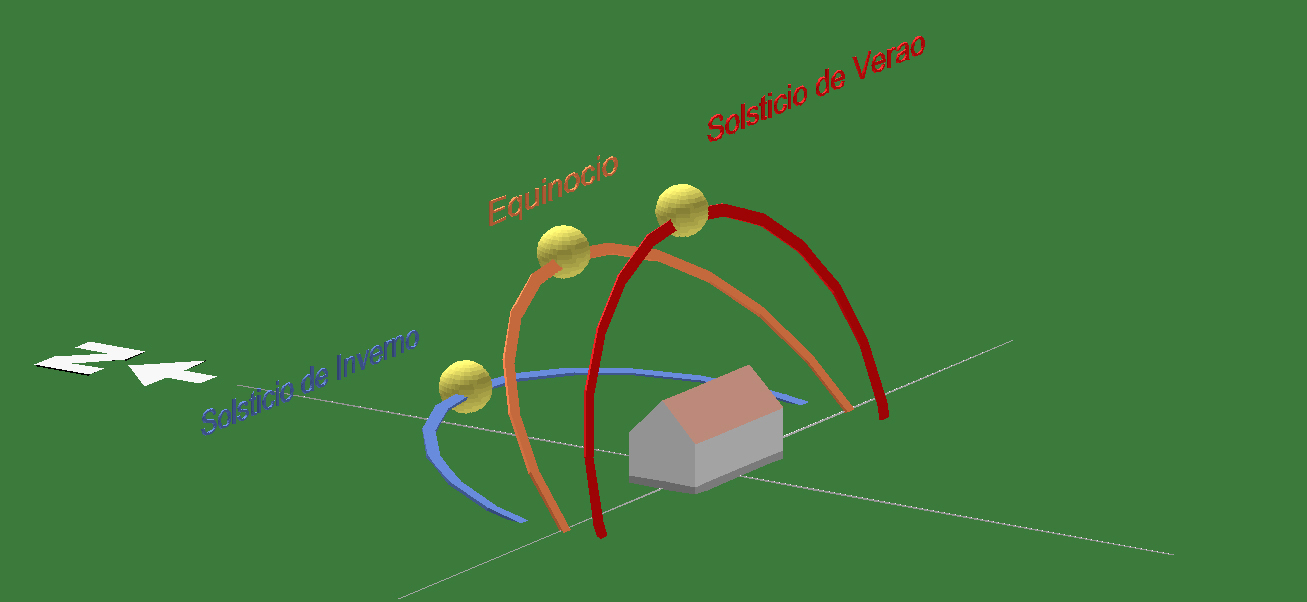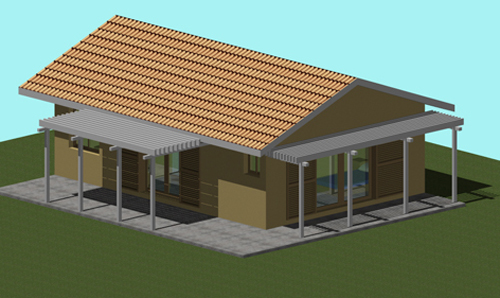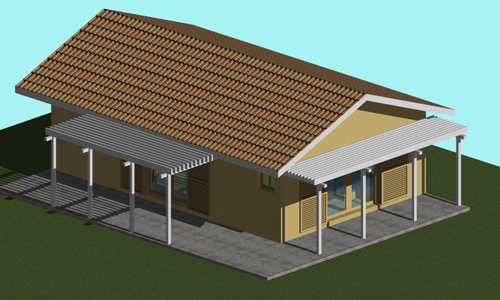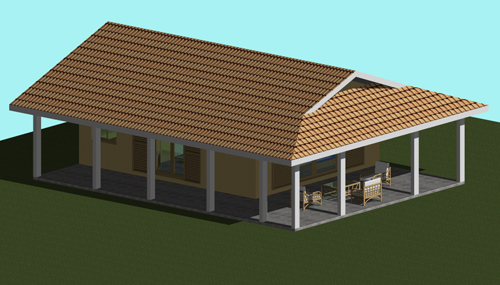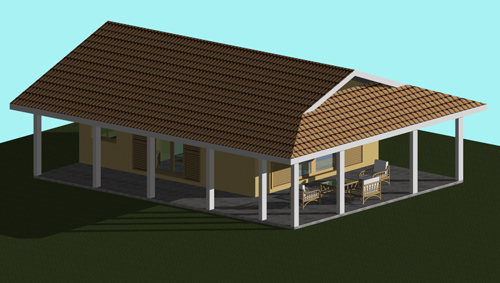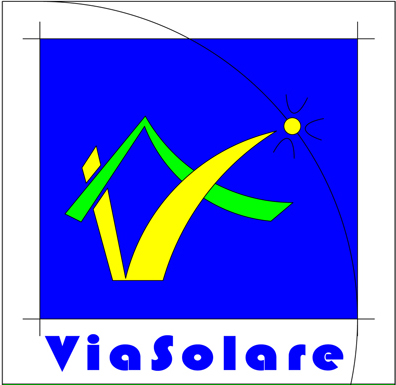|
ViaSolare |
|||||
|
ESD - Sustainable Architecture |
|||||
| About Us | Philosophy | Services | |||
|
M E N U
|
PASSIVE SOLAR DESIGN
The model is a representation of a latitude further down from the Equator line in the Southern Hemisphere and is a simple 3D example of how the sun altitude changes along the year. Solar angles vary according to latitude and the time of the day. Red colour represents a higher solar path (Summer Solstice), orange is for the middle path (Equinox - Spring and Autumn) and blue is for the lower solar path (Winter Solstice). These solar paths define the 4 annual seasons.
Passive solar is a type of sustainable design which makes use of the natural sun exposure or exclusion to the built environment. So, it can create favorable conditions for thermal comfort, according to the latitude and climatic conditions. Our design can provide shade for warm seasons, keeping the building naturally fresh, at the same time it allows solar inclusion to the building in cold seasons, to keep the building naturally warmed up by the sun. ViaSolare can do it. We know how.
Sustainable architecture combines orientation, building shapes, openings and materials which have a desired thermal response and allows the designer to create the maximum benefit of shading in warm seasons and solar exposure for cooler seasons. The intention is to regulate the building thermally, to get fresh living spaces in summer and warm ones in winter, by using natural resources. The designer has to possess a deep knowledge of solar geometry and thermo-dynamic principles to achieve the comfort desired. Solar heating or shading is planned for when it is desired only.
If you are looking for an architectural design which allows saving energy in air conditioning, we can do such a design for you. The building itself dos not cost more than the ones of other projects and it can receive solar panels for hot water and PV solar panels for production of electric energy , which can be included during construction or to be installed at any time in the future. With the same money, we can construct a building which is designed to be energetically efficient, consuming almost half of the other buildings and can also include equipment for producing its own energy.
The examples given of the study models below show the importance of mastering this knowledge, to get the desired result for the right climate and the right time of the year. Depending on the climate, the use of air conditioning can be reduced significantly or even eliminated, allowing the user to save energy, money and reduce impact in nature. ViaSolare can design your building, using solar passive design principles. We can see below two very basic examples of shading studies, showing how different climates require different design solutions to save energy for thermal comfort. |
How good it would be... If we could live in a place which would be shaded, well ventilated and feel fresh, in summer... At the same time, it would be sunny, warm and cozy, in the cool days...
How good it would be… If this type of place, would be cheaper to run...
It would be even better, if we could have all these things, using natural resources, to live in harmony with the environment! |
|||
|
Example-1 In tropical climates, shade is desired all year around.
1-Summer Midday
Study-1 model shows the house image above getting shaded by the pergola in the North orientation in summer. However the picture below shows the same size pergola at the West facade of the building allowing exposure to the sun in the afternoon, overheating the building in a non-desired season.
1-Summer Afternoon
In Study-1 the correct placement of the openings or suitable shading device for the western side of the building, could save energy for air-conditioning cooling in warm climates. This design fails to keep the building naturally fresh all year around.
|
Example-2 In temperate and cold climates shade is required in warm seasons but not in cool seasons.
2-Summer Afternoon
Study-2 model shows the house image above getting shaded by the verandah roof to North and West orientations in summer. The image below shows the sun inclusion into the building in the winter afternoon, to the West orientation, heating the interior of the building when it is desired.
2-Winter Afternoon
In Study-2 the correct extension of the roof provides shading and saves energy for air-conditioning cooling in the warm seasons. At the same time, the sun allowance saves energy in heating for winter. This design keeps the building naturally fresh in warm seasons and warm in cool seasons.
|
||||
|
Now, you can!
ViaSolare can do such a design for you.
Copyrights Reserved
|
|||||
| ViaSolare, consciousness for a sustainable future - Visit us on Facebook: ViaSolare-International - Skype: viasolare.international | |||||
